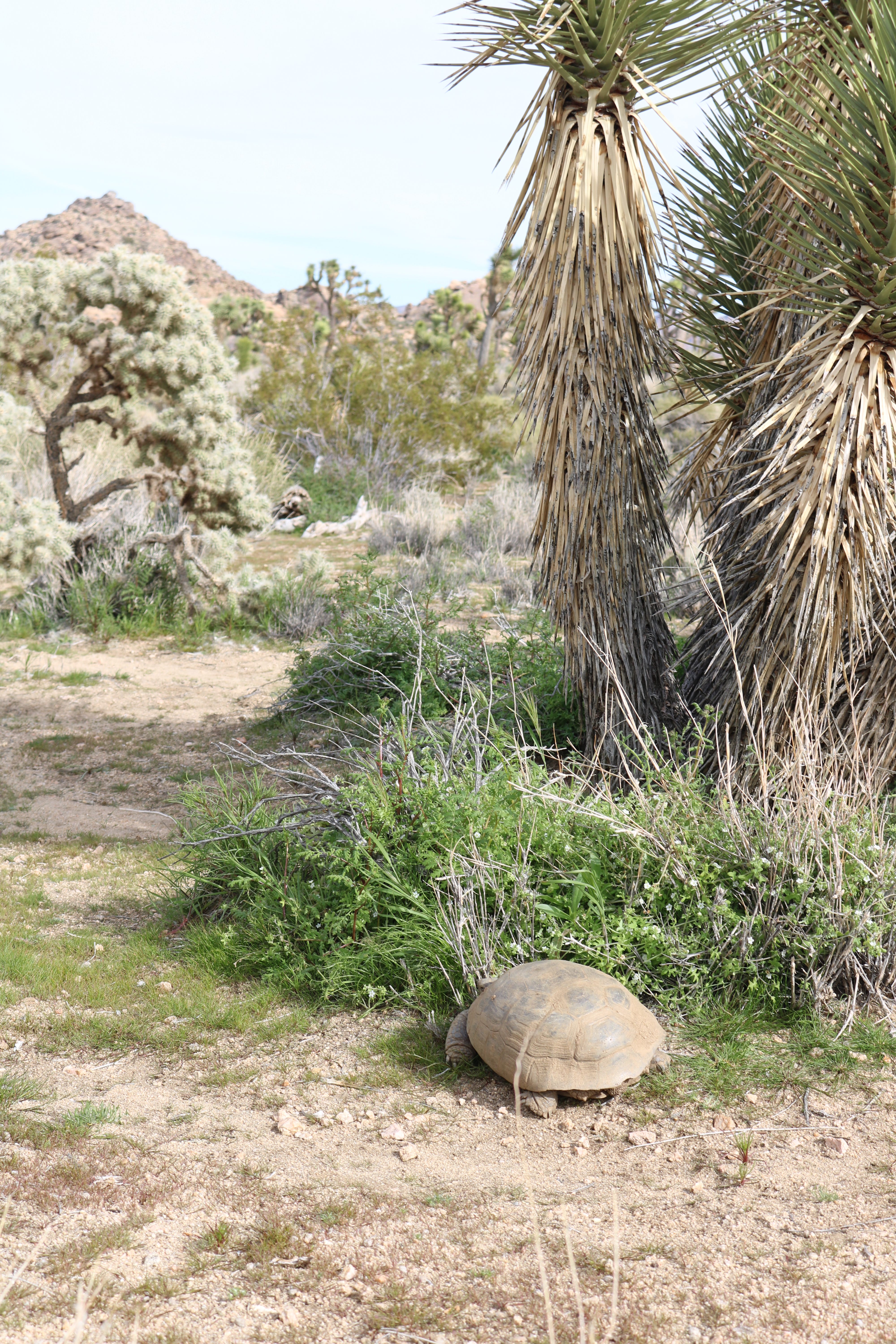Desert plants — and the desert floor itself — are key fighters of climate change
The so-called ‘barren’ lands of the Mojave actually play an important role in keeping carbon out of the atmosphere.

If you were to dream up a landscape designed to fight climate change, it’d likely be quite green — a lush, thick Amazonian forest of trees, ferns and other flora. In other words: it could hardly be more different from a desert.
But that doesn’t mean arid lands don’t do their part. Scientists have been surprised to find that deserts, like other ecosystems, function as a carbon sink; in fact, a recent USGS study estimated that from 2001 to 2005, the “net carbon flux” — i.e. carbon emitted vs. carbon kept — of the United States’ warm deserts was -6.8 teragrams per year (in case you were wondering, a negative number on that measurement is a good thing!).
This means our Mojave Desert and all the world’s arid lands play a key role in the carbon cycle and carbon uptake — and that preserving them is of high importance as the climate change battle continues.
But wait: How does a landscape that seems so empty keep carbon?
The first answer might be obvious: Plants.
It’s no secret that plants breathe carbon, and the Mojave is home to a surprising array of species that can survive on limited amounts of water (just take a look at the Mojave Desert Land Trust’s Native Plant Restoration Nursery and Seed Bank to see the abundance).
That means the Mojave’s iconic plants — the Joshua tree, the creosote, ephedra, Mojave yucca, the mesquite, and every kind of cactus — are not just beautiful, they’re quiet, calm, stoic soldiers that sequester CO2; in 2005, that USGS study estimated that biomass in the United States’ warm deserts stored between 149.4 and 451.9 teragrams of carbon.

Although from plant perspective, our desert can’t compare with the forests of the Pacific Northwest, the California desert has a secret weapon — and it’s deep beneath our feet.
A 2014 study led by Washington State University professor R. Dave Evans found that the Mojave has been sequestering a surprising amount of CO2 in its soil, mostly in a microorganism-rich layer around plant roots called the rhizosphere (for more details on this near-magic process, check out this article from botanist and SummerTree Institute Executive Director Robin Kobaly).
In fact, unlike most other ecosystems that store the majority of its carbon in live biomass, between 50 and 60 percent of warm deserts’ CO2 storage is estimated to occur in the soil, a number that is expected to increase to around 63 percent by 2050 per that USGS study.
That’s not all — when CO2 levels go up, according to the Evans study, the soil absorbs even more carbon.
“They’ll help take up some of that excess CO2 going into the atmosphere,” Evans said upon the release of the study. “They can’t take it all up, but they’ll help.”
As there is so much desert acreage out there, that’s good news.

However, this status as a carbon sink isn’t set in stone. When 2050 climate models were run by the USGS, it showed that warm deserts like the Mojave could actually become a source for carbon, not a sink — i.e., more carbon released than stored — and it would be the only ecosystem that crossed the line from sink to source.
The driving forces behind this change include higher temperatures, decreased precipitation and land use change (i.e. higher rates of development) — the first two being global phenomena that all climate-conscious people are working to address, but the last of which is up to us here in the Mojave. Conservation is paramount for the desert not only to maintain its unique ecosystem, but to keep up its role in the climate change fight.
This is where the Mojave Desert Land Trust comes in. Like the desert itself, MDLT is committed to fighting climate change on these very same fronts: Through revegetating disturbed areas — in other words, adding more plants” to areas where they’ve been removed or harmed, and jumpstarting the rebuild of the rhizosphere beneath them — and via conservation, acquiring land with critical ecological value and conserving it through accepted land stewardship and monitoring practices, thus preventing significant greenhouse gas emissions that would result from human disturbances.
So no, the Mojave might not be your first idea of a climate change-battling landscape. But it’s playing a significant role in the fight. And you can help, one Joshua tree or beavertail or preserved plot of land at a time.
